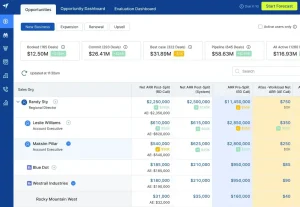
You know that local coffee shop around the corner? The one with the perfectly foamy lattes and the owner who remembers your name? Imagine if, a few years back, your savings had helped them get their first espresso machine. That’s the heartbeat of community-supported lending. It’s a financial model that’s less about cold, distant Wall Street and more about warm, bustling Main Street.
Honestly, it’s a shift. A move away from faceless banking and towards a system where your money has a direct, visible impact on your own neighborhood. Let’s dive into how these local investment models are rebuilding prosperity from the ground up.
What Exactly Are We Talking About? The Basics of Local Lending
At its core, community-supported lending cuts out the middleman. Instead of your savings being pooled into a massive, anonymous bank that might invest it anywhere in the world, these models connect local capital directly with local people and projects. Think of it as a farmers’ market for finance. You get to see exactly who you’re “buying” from and how your investment grows the local ecosystem.
The Main Players in the Local Finance Game
This isn’t a one-size-fits-all idea. A few key models have taken root, each with its own flavor:
- Credit Unions: These are member-owned, not-for-profit financial cooperatives. Any profits are returned to members in the form of better rates and lower fees. They’ve been doing the “local thing” for over a century.
- Community Development Financial Institutions (CDFIs): These are specialized lenders—often banks, credit unions, or loan funds—that have a explicit mission to serve underserved communities. They are the unsung heroes of economic development in areas traditional banks ignore.
- Peer-to-Peer (P2P) and Lending Circles: Often facilitated by online platforms, these connect individual lenders directly with individual borrowers. Lending circles, in particular, are a powerful tradition in many cultures, where a group of people pools their money and takes turns receiving the lump sum.
The Tangible Benefits: Why This All Matters
Sure, it feels good. But does it actually do good? The answer is a resounding yes. The impact of directing capital locally is profound and multifaceted.
For the Local Economy: A Rising Tide
When a small business gets a loan from a community lender, something magical happens. They hire locally. They source supplies from other local businesses. They create a vibrant, unique place that attracts visitors. This creates a powerful economic multiplier effect. A dollar spent locally circulates many more times than one spent at a multinational chain.
It’s about resilience, too. During economic downturns, locally rooted businesses are often more committed to staying put and supporting their employees. They aren’t just a branch office that can be closed by a corporate decision made a thousand miles away.
For You, The Investor: Meaning and Returns
This is where it gets personal. With community-supported lending models, your investment has a story. You’re not just holding a stock ticker; you’re driving past the new community health clinic your CDFI loan helped fund. You’re eating at the restaurant your credit union helped expand.
And financially? Well, you can often get competitive, stable returns. CDFI-backed notes, for instance, might offer modest interest rates, but with a historically high degree of security and the immense satisfaction of social impact. It’s a different kind of ROI—one that includes both financial and social dividends.
How It Works in Practice: The Nuts and Bolts
Alright, so how do you actually get involved? The pathways are more accessible than you might think.
| Model | How You Can Participate | Typical Investment/Deposit |
| Credit Union | Open a savings account or certificate of deposit (CD). Your deposits fund loans to other members. | As little as $5 to open a share (savings) account. |
| CDFI Loan Fund | Purchase a community investment note or directly lend to a specific project or pool of borrowers. | Often starts around $20, but some platforms allow for smaller increments. |
| P2P Lending Platform | Create an online account and choose individual borrowers to fund, often diversifying across many small loans. | Can be as low as $25 per loan. |
The process is surprisingly straightforward. You find a local institution or a vetted online platform that aligns with your values. You do your due diligence, of course—just like with any financial decision. And then you make a deposit or an investment. The institution or platform handles the underwriting, the paperwork, and the servicing. You get to be the engine, not the mechanic.
The Challenges and Realities
Now, it’s not all sunshine and rainbows. Community lending isn’t a magic bullet. There are hurdles.
Scale is a big one. These models can’t always provide the multi-million-dollar loans that a large corporation might need. And for the investor, the returns might not be as explosively high as a lucky stock pick (though they’re often more stable). There’s also the perception of risk—lending to a small startup is inherently riskier than buying government bonds, though CDFIs, for example, have remarkably low default rates due to their intensive technical assistance.
And let’s be real—it requires a shift in mindset. It asks us to be patient capitalists, to value community health as much as personal wealth.
A Future Built Together
In a world that feels increasingly disconnected, community-supported lending offers a powerful antidote. It’s a practical, tangible way to rebuild the connective tissue of our towns and cities. It’s finance with a human face.
It’s about choosing to nurture the soil in your own backyard rather than just hoping for a harvest from a field you’ve never seen. The question isn’t really whether you can afford to invest this way. It’s whether your community can afford for you not to.







